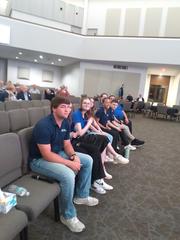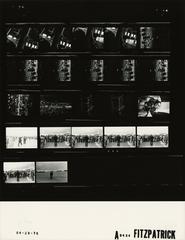Bledsoe Santa Fe Depot Lubbock Visiting Hours, Tickets, and Historical Sites Guide
Date: 14/06/2025
Introduction
The Bledsoe Santa Fe Depot is a preserved testament to West Texas’s dynamic railroad history and the transformative impact of the Atchison, Topeka and Santa Fe Railway. Built in 1925 in Bledsoe, Texas, this depot played a pivotal role in connecting isolated agricultural communities to wider markets, spurring economic growth and social cohesion across the South Plains. Today, relocated and maintained in Lubbock, the depot serves as a museum and interpretive center, inviting visitors to explore the golden era of rail travel and its influence on regional development.
This comprehensive guide details the depot’s history, visiting hours, ticketing options, accessibility, exhibits, and nearby attractions. Whether you are a history enthusiast, photographer, or traveler, use this resource for a rewarding visit to one of Lubbock’s most significant historical sites. For additional information, see the Lubbock Historical Sites Guide, the Santa Fe Surviving Depots archive, and the official Visit Lubbock Attractions page.
Historical Overview
Origins and Railroad Expansion
The Bledsoe Santa Fe Depot emerged during a period of significant railway expansion in West Texas. Chartered in 1916, the South Plains and Santa Fe Railway—part of the Santa Fe network—extended rail service from Lubbock westward to the New Mexico border. Completed in 1925, the Bledsoe depot became a key stop along this line (Santa Fe Surviving Depots: Texas). It was instrumental in facilitating the shipment of cotton, grain, and livestock from the largely agricultural region.
Architecture and Community Role
Constructed in the Santa Fe’s standard rural Texas style, the depot featured a wood-frame structure with a gabled roof and wide eaves, designed for both functionality and durability. The building included separate waiting rooms, a ticket office, and a freight room, reflecting social and operational norms of its time (Santa Fe Depots: Western Lines, 1985, Kachina Press). The depot quickly became the heart of the community, serving both economic and social functions: farmers shipped goods, merchants received supplies, and local residents gathered for news and events.
Economic and Social Impact
By providing vital access to national markets, the depot spurred the growth of Bledsoe and nearby towns, attracting settlers and businesses. The arrival of the railroad enabled efficient transport of agricultural products, reduced regional isolation, and fostered community cohesion. The depot also provided direct employment and boosted local commerce (Fort Tours).
Decline, Preservation, and Relocation
The mid-20th century brought a decline in rail service as highways and automobiles became dominant. By 1966, the depot was retired. Recognizing its heritage value, preservationist Gene Hemmle led efforts to move the depot about 70 miles east to Lubbock, saving it from demolition (Fort Tours). In 1973, it was designated a Recorded Texas Historic Landmark, ensuring its continued protection and educational use (Lubbock County).
Visitor Information
Location & Directions
- Address: 6105 19th Street, Lubbock, Texas
- Directions: From downtown Lubbock, drive west on U.S. Highway 84 for approximately 30 miles. Parking is available on site.
Visiting Hours
- Hours: The depot is generally open to the public during daylight hours as a historic site. For guided tours or special events, check with the Historic Lubbock County office or Visit Lubbock Attractions.
- Note: The site is not a full-scale staffed museum. Scheduled events and tours may offer expanded hours.
Admission & Tickets
- Admission: Free. No tickets are required for general visits.
- Donations: Appreciated to support preservation.
- Group Tours: May be arranged through local heritage organizations or the National Ranching Heritage Center.
Accessibility
- Wheelchair Access: The site is wheelchair accessible, with nearby parking.
- Facilities: Restrooms and additional amenities may be available during special events; contact ahead for details.
Exhibits, Events, and Visitor Experience
On-Site Features
- Interpretive Marker: A Texas Historical Commission plaque provides background on the depot’s origins, functions, and relocation.
- Exhibits: The depot displays artifacts, photographs, and interpretive materials on West Texas railroading and rural life.
- Architecture: The preserved wood-frame structure offers an authentic glimpse into early 20th-century railroad design.
Guided Tours & Special Events
- Guided Tours: Available by appointment or during scheduled events. Led by knowledgeable volunteers, these tours offer deeper insight into the depot’s significance.
- Events: The depot occasionally hosts heritage festivals, educational workshops, and community gatherings. Check local calendars for upcoming activities.
Photography
- Photography: Encouraged. The depot’s rustic architecture and scenic surroundings are ideal for photos, particularly during golden hour.
Nearby Historical and Cultural Attractions
Combine your visit to the Bledsoe Santa Fe Depot with other Lubbock sites to enrich your experience:
- National Ranching Heritage Center: Explore restored railcars, ranching exhibits, and outdoor historical structures (National Ranching Heritage Center).
- Buddy Holly Center: Celebrate the legacy of Lubbock’s iconic musician (Buddy Holly Center).
- Depot District: Enjoy dining, live music, and nightlife in Lubbock’s vibrant railroad-themed neighborhood.
- West Texas Walk of Fame: Discover tributes to notable regional figures.
Tips for a Successful Visit
- Plan Ahead: Contact local organizations for current information on tours and events, especially if traveling from out of town.
- Engage with Staff/Volunteers: Docents often share enriching stories and historical perspectives.
- Participate in Events: Check for seasonal festivals or educational programs.
- Respect Preservation Efforts: Follow posted guidelines to help maintain the site for future generations.
Educational and Community Value
The Bledsoe Santa Fe Depot serves as a hands-on learning resource and a symbol of Lubbock’s railroad legacy. Teachers, students, and history buffs can gain insights into regional development, architectural trends, and the broader impact of railroads on the American West (Fort Tours). The depot’s relocation and preservation demonstrate the importance of safeguarding heritage sites for community identity and education.
Frequently Asked Questions (FAQ)
Q: What are the visiting hours for the Bledsoe Santa Fe Depot?
A: The depot is generally open during daylight hours; for guided tours or events, check with the Historic Lubbock County office.
Q: Is there an admission fee or ticket required?
A: No. General admission is free, and no tickets are needed. Donations are welcome.
Q: Are guided tours available?
A: Yes, by appointment or during special events. Contact local heritage organizations for details.
Q: Is the depot site wheelchair accessible?
A: Yes, with nearby parking and accessible pathways.
Q: Can I take photographs?
A: Yes, photography is permitted and encouraged.
Plan Your Visit & Stay Updated
Experience the Bledsoe Santa Fe Depot and its remarkable story firsthand. Combine your visit with other Lubbock historical attractions for a fuller appreciation of the area’s heritage. For the latest updates on hours, tours, and special events, visit the Historic Lubbock County website and Visit Lubbock Attractions. Download the Audiala app for guided audio tours and curated cultural experiences.




